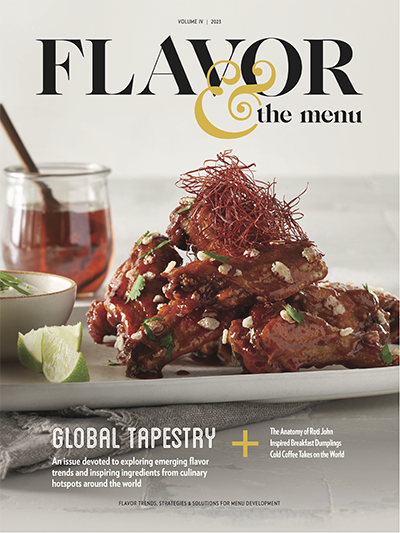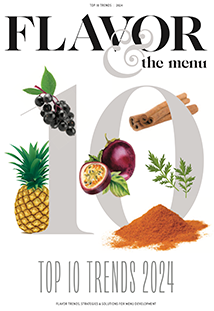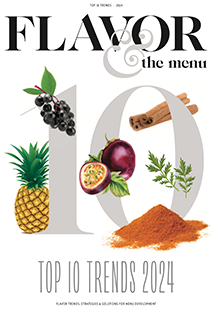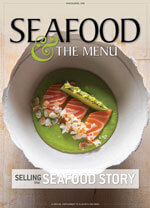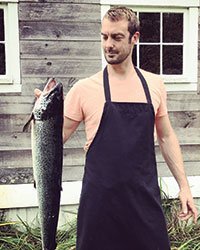
Barton Seaver
We as chefs know how to sell a story. Due to the proliferation of “new” ingredients like seasonal heirloom tomatoes that burst with flavor and aroma, and Ossabaw Island hogs, raised on woodlots foraging acorns and delivering heritage flavor, we have become well-versed in the technique of using an ingredient’s delicious backstory to sell a plate of food.
The good news, for chefs and farmers alike, is that customers are buying it, even demanding it. They are literally eating up these stories at breakfast, lunch and dinner.
When we offer a diner a green zebra tomato grown by Farmer Jane in the height of summer, we are tapping into our collective vision of the American agrarian story of amber waves of grain. The meaning of this story is woven into the fabric of our country’s identity. We sing songs about it as an exercise in patriotic pride.
Consequently, in the foodservice world, you can easily see how the draw of this underlying storyline dovetails into how we can use raw ingredients’ provenance to sell the menu items we create from them. It’s now an expected part of the hospitality relationship.
But if you close your eyes, can you conjure up a vision of an American fishery? Most chefs and consumers can’t. We might think of a fishery—the fish in the water, the boats used to reach them, and the men and women who harvest them —as something that happens elsewhere, beyond the horizon of our attentions. We generally don’t recognize fisheries as part of a larger food system because most of us lack a human connection with them.
But as a matter of history, before the fruited plains became the foodstuff of the American economy, there was cod. The lifeblood for this fledgling nation, from sea to shining sea, historically, was fisheries. And though our attentions have focused more on our inland bounty, these communities, and the stories of their haul, are as much a part of the fabric of the American food system as any family farmer, heirloom vegetable or heritage hog was or is. It stands to reason, then, that we as chefs should take this opportunity to tell these stories of seafood provenance in order to better sell more seafood, more often, and to better support those communities who nobly provide for us.
We’ve dedicated this issue of Seafood & The Menu to telling stories of seafood and the incredible men and women who fish and farm in North American waters. We touch on their personal backstories to understand their way of life. We explain the conditions under which the species they fish and farm play into their products’ quality, texture and taste. And we tap seafood-forward chefs to tell how narrative and quality manifest in compelling dishes at the table. When we as chefs write our menus, any story we sell has to be told in the language of delicious. And on that topic, seafood can speak volumes.
Reading this issue, we hope you will gain a better understanding of how you as a chef can draw a storied line from dock to dish. Understand, though, that the living, breathing tales can’t be captured in these pages alone. Trust us when we say that there are tens of thousands more where these came from. Whether those stories are anchored in American fisheries or coming from other parts of the world, they are well worth seeking out as a means of both establishing your own personal seafood literacy and populating your menu with the seafood dishes your customers seek.
As we wax poetic about these species and the people producing them, we are also cognizant of the fact that you can’t always believe everything you read, especially when you factor in fraud within and sustainability considerations surrounding the seafood industry. “Trust but verify” is the motto we have adopted on both of those fronts. To that end, you’ll find an article that breaks down the acronym-filled world of sustainability certification into concise, digestible bits of information in Alphabet Chowder Spelled Out.
And we also walk you through different ways to think about the dangers of (and protect yourself against) getting caught up in seafood fraud in 5 Ways to Combat Seafood Fraud.
Storied seafood isn’t just dock and dish—it’s also everyone in between. The story of your relationship with your supplier is just as important, and is vital to ensuring that you receive the truth and quality you expect.
And lastly, we’re publishing the inaugural “Wider Net” column, in which our guest writer helps us to see the seafood industry not just as fins and fillets but also through the lens of values and virtues—what we might call a civic fishery. In this issue, seafood advocate and wife of a Maine lobsterman Monique Coombs explains how chef dollars spent on seafood can have a far-reaching effect on local communities in The Rising Tide of Seafood Menuing Raises All Boats.
So I invite you to cook and eat like you live as our neighbor here on the Maine coast, or put yourself in a community that can see the Gulf of Mexico from its kitchen tables, or learn the legends of the Pacific Northwest where salmon and humans exist in a communion of shared history.
Share your inspirations with us by posting the words and pictures that tell your own seafood story on social media by tagging us @getflavor and @bartonseaver. The story of sustainable seafood is not just how we impact the environment. It’s equally about how seafood sustains us.

